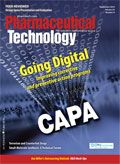R&D Mash-ups
Changing demands in drug development lead to new service combinations and models.
Not so long ago, money flowed freely and drug development was relatively straightforward and proceeded at a leisurely and step-wise pace. Cost pressures and declines in research and development (R&D) productivity have changed the model. Wholesale restructuring of drug development that emphasizes time- and cost-savings and that kills unpromising compounds early is a sign of good management. This approach has engendered other responses such as the exploding volume of clinical trials in emerging markets and the growing reliance on contract research and development organizations (CROs and CDMOs) for key R&D functions.

Jim Miller
Some CROs and CDMOs view the restructuring of the R&D process as opportunity. They are trying to mimic pharmaceutical companies' in-house efforts by creating integrated service offerings by combining activities that traditionally have been provided separately (e.g., medicinal chemistry and toxicology or clinical supplies distribution with clinical packaging). We are calling these integrated service offerings "R&D mash-ups." "Mash-up" is a pop-culture term to describe an application or a derivative work that is constructed by combining multiple original sources such as websites that aggregate content.
One area where we see mash-up pharmaceutical service offerings is the combination of late discovery services with preclinical toxicology. Late discovery is critical for identifying toxicology problems with drug candidates, and preclinical CROs are moving into that space, especially through acquisitions. For instance, Aptuit recently acquired GlaxoSmithKline's R&D site in Verona, Italy, giving it discovery toxicology capabilities that pair with its chemistry capabilities in the UK, the US, and India.
A more aggressive move was the CRO Charles River Laboratories' $1.6 billion bid for Wuxi PharmaTech (Shanghai). Charles River hoped to pair its $500 million preclinical toxicology business with Wuxi's $270 million medicinal and process chemistry business to build a combined discovery/early-development offering. Charles River's shareholders recently rejected the deal as being too costly, but Wuxi, which opened a new 250,000-ft2 toxicology facility last year, is positioned to go it alone with a combined offering.
CTM, drug engineering mash-ups
Clinical supply logistics is another area for mash-up offerings. Traditionally, packaging, distribution, and local storage of clinical-trial materials (CTM) were three distinct service offerings. Clinical packagers handled the primary and secondary packaging, courier and parcel services got the supplies from the packager's loading dock to the clinical site or local storage depot, and clinical CROs provided the depot facilities. The expansion of clinical trials in emerging markets and the need to maintain the cold chain for bio/pharmaceuticals is leading to the integration of these previously separate activities and enhanced the role of courier services. Courier services now maintain their own network of supply depots, and at least one is about to open its own packaging operation. Traditional clinical packagers are also building their own depot networks.
Drug engineering is another area for mash-up services in medicinal chemistry, solid-state chemistry, process chemistry, and materials science to resolve solubility problems for active pharmaceutical ingredients (API) that need some sort of engineering that changes their form (e.g., micronization or the combination with a polymer through a process such as hot- melt extrusion or spray drying). Where these drug-engineering capabilities will ultimately reside is not yet clear. We are starting to see competition emerge among API manufacturers, formulation CROs, dose manufacturers, and new companies specialized in materials science.
Of course, not all mash-ups work out successfully. Before they got into linking late discovery and early development, some preclinical CROs thought there was a natural toxicology continuum from preclinical animal testing to Phase 1 first-in-man testing. Several CROs made some expensive acquisitions to increase their network of Phase I facilities and began promoting the combined offering. We haven't heard much about that combination lately, and the value proposition may not be there.
Mash-ups must have a strong scientific or operational rationale to succeed. A successful mash-up strategy requires a lot of pieces to work well and together. If a CRO's toxicology capabilities are strong, but its medicinal chemistry know-how is weak, or if its project management and coordination are poor, it won't be able to deliver better drug candidates faster and cheaper.
Mash-ups are potential game changers in the contract services industry and have the opportunity to make a major contribution to improving the effectiveness and efficiency of drug R&D. But they entail much more than putting multiple services under a single brand.
Jim Miller is president of PharmSource Information Services, Inc., and publisher of Bio/Pharmaceutical Outsourcing Report, tel. 703.383.4903, fax 703.383.4905, info@pharmsource.comwww.pharmsource.com.

Drug Solutions Podcast: A Closer Look at mRNA in Oncology and Vaccines
April 30th 2024In this episode fo the Drug Solutions Podcast, etherna’s vice-president of Technology and Innovation, Stefaan De Koker, discusses the merits and challenges of using mRNA as the foundation for therapeutics in oncology as well as for vaccines.
Drug Solutions Podcast: Applying Appropriate Analytics to Drug Development
March 26th 2024In this episode of the Drug Solutions Podcast, Jan Bekker, Vice President of Business Development, Commercial and Technical Operations at BioCina, discusses the latest analytical tools and their applications in the drug development market.